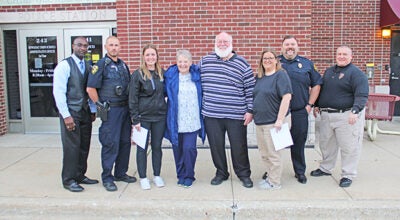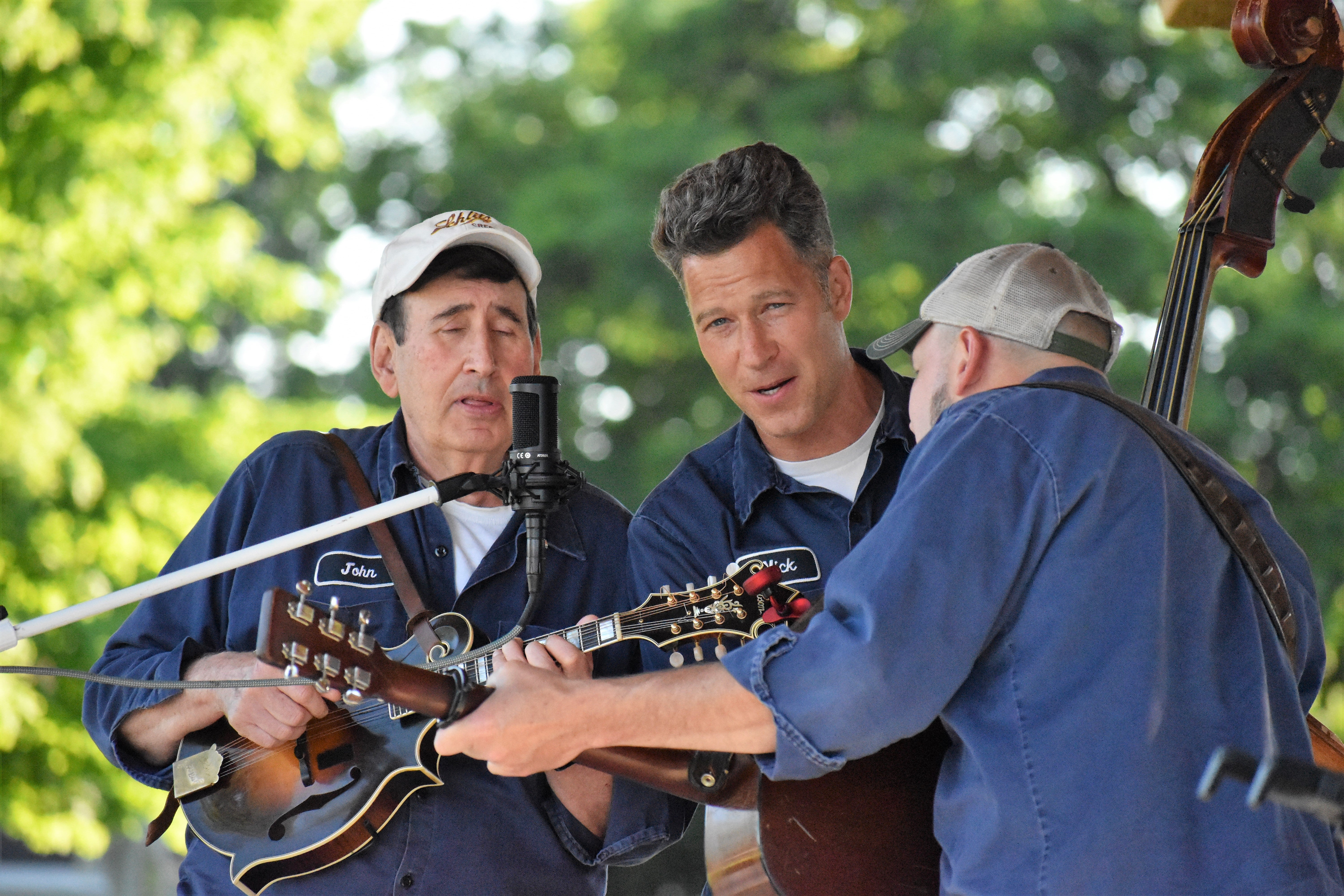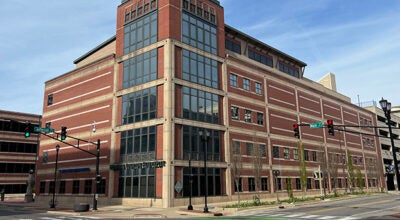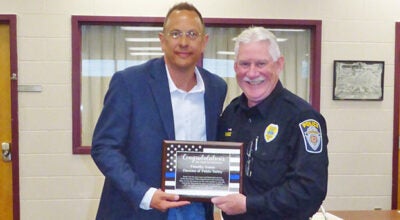CVBESA updated on CEMS
Published 10:35 pm Monday, January 17, 2011
CEMS Medical Transport responded to 204 emergency calls in December with an average response time of 5:49, CEO Brian Balow reported to the Cass-Van Buren Emergency Services Authority quarterly meeting at Dowagiac City Hall Monday afternoon.
For 2010, there were 890 priority calls averaging a 5:22 response.
Distribution of calls includes: Dowagiac, 106, 4:37; Silver Creek Township, eight, 5:37; Pokagon Township, 38, 6:14; Wayne Township, 38, 7:23; Volinia Township, seven, 11:25; and LaGrange Township, seven, 6:51.
CEMS made eight requests for mutual aid and provided it 37 times last year.
Balow addressed last January’s merger with Pride Care Ambulance of Kalamazoo.
“Bringing the two companies together and why that’s important for us here in Dowagiac, it makes us the largest regional provider. There are probably six or seven regional players. As the health care system continues to move around the way it is, this is pretty significant for us and will allow us to do a lot of really cool things,” such as EMS Redline.
A national map with 39 dots includes San Francisco, New Jersey, New York, Atlanta, Chicago, Phoenix, Alabama and Boston.
“We’re collectively $500 million as a self-insured group, but the cool thing we just started is group purchasing,” by which Pride Care bought its first $104,000 Sprinter ambulance with a Mercedes engine for $78,000.
“That brings a whole different level of discounts when you come to the table. We’re going to have better stuff and be able to provide more things to the community. We’re building and developing technology in Kalamazoo and have been. I’ve been doing it for about 12 years in Coloma. We’re in 12 cities, with big companies using our software to manage their operations. The Redline also gives us access to the largest providers building things,” such as cots.
“They flew a bunch of us to Toronto to see this equipment,” Balow said. “All three roll-out locations are in the Redline group — New Jersey, California and Kalamazoo. We don’t pay a penny and we get access to this advanced technology, this new stuff. Hospitals have been doing this forever, but ambulance companies have never been at this table.”
“We maintained non-profit (status),” Balow added. “We’re still a 501(c)(3) company, which allows us to get grants. We serve five counties (Cass, Berrien, Van Buren, Kalamazoo and St. Joseph) from nine facilities. Twenty-seven municipalities within those five counties. The Kalamazoo operation is CAAS-accredited, which we will be working toward getting the other three counties CAAS-accredited on the next renewal in a year and a half. Collectively, between the two companies, we’re looking at about 60,000 requests for service. On a non-emergency basis, we serve just about everything in the region.”
Next week CEMS will be providing classes at The Timbers of Cass County, Vice President Cassie Sikes said.
Balow, who, like Sikes, has been with CEMS for 26 years, said there are 54 paramedics, 81 emergency medical technicians (EMTs), 17 emergency medical dispatchers, 25 ambulances, 40 wheelchairs and 18 support staff.
“We’ve always offered vision, dental and that stuff,” he said, “but what’s cool now is flexible scheduling. Why is that important for Dowagiac? Before, we didn’t have an urban area to pull from, like Portage or Kalamazoo. Now, when a new recruit comes out of school, we can offer them” an urban area or a rural area like Dowagiac, Bangor or Gobles.
“We’ve got a whole bunch of ways to give them access to a system that has lots of flexibility. Eight, 12-, 24-hour shifts. The other new thing is advancement opportunities. For recruitment, with a bigger structure running close to $20 million as a collective group, there now is a career path. We’ve got tons of opportunities for education people, dispatch people, administrative people, quality assurance people. Before, many of us wore different hats.
“Something you’re going to see in Dowagiac here real soon, probably next week, we’re going to a new uniform. They’re going to be laundered professionally by Cintas. Each employee gets 11 uniforms each week, then they’re pressed and cleaned so they don’t have to mess with that. New jackets, too.”
Maintenance issues are tracked with special software.
“The crews write up if there’s a problem with a vehicle. Before, it was a paper process or a phone call. Now, it’s all Web-based, so as soon as there is a light bulb out or it’s pulling hard to the right, that information is sent immediately to our dispatchers and appropriate supervisors get texted, so we can fix problems quicker.
“We’ve got GPS on board. What that means is not only can crews see where they’re going, but we can see the entire fleet from Kalamazoo and what routes they take. There’s a cookie trail if it takes them 10 minutes to get to a call. It time stamps it, so we literally know what they’re doing and where they’re going.”
A grant will equip ambulances with 800 mobile units.
“These are state-of-the-art radios, not hand-held portables, but in-vehicle mobile units,” Balow said. “We’re really proud of the dispatch center, which has been a focus for the last year. Pride Care is the largest strictly EMS dispatch center in West Michigan. Next closest would be Grand Rapids or Ann Arbor.
“The new facility has 10 stations and two supervisors. Climate-controlled servers. We just updated all our CAD software, brand-new Dell servers, racks, the whole nine yards. We got a grant to put modems in the trucks so we can send data back and forth to the crews.”
Balow said an ambulance is paid for in three ways — user fees, insurance companies or tax subsidies.
“You’re not paying any taxes here,” compared to a Van Buren County tax which generates $400,000.
“There’s a national fee schedule that controls the cost of what all ambulance companies can charge and what they actually collect. It doesn’t matter what you charge, Medicare is going to allow $395.49, even if you billed $1,500. They’ll pay 80 percent of that, or $316.39. The patient’s responsible for $79.10. Medicaid will pay $191.88 and the patient has no out-of-pocket expenses.
“There are two reasons ambulance companies don’t pick a number and stick with it — auto and workers comp. If you get hurt on the job, workers compensation is going to pay it, 100 percent, whether it’s $695, $895 (CEMS) or $1,500 (Fort Wayne, Ind.). Again, the patient pays nothing. Same thing with auto. You’re in a car accident, auto insurance picks up 100 percent of it, with some exceptions. Out-of-pocket to the patient is the same. The one time it becomes an issue for the patient is if they have no insurance.”
Balow said Pride Care analyzed a six-month period from July to December to bid on a contract in Kalamazoo Township and found it billed $60,000 to receive $27.
“We bill a little bit more for car accidents and workers compensation,” he said, “some of which goes back into the $300,000 we budget annually for training. We piloted a community-wide CPR (cardio-pulmonary resuscitation) program in October in Kalamazoo Township to see how it would go. We had over 200 citizens come in and take it.”
The Sprinter ambulance is “similar to FedEx trucks, with a European-styled front end, twice the fuel economy and it’s a modular truck and taller.”
Balow also outlined the new incentive program.
“We’ve just implemented this for 2011. Crews are going to start handing this out,” he said of a pamphlet with a “How’d We Do?” survey rating their professionalism, courteousness and punctuality.
“They’re encouraged to send that in, which we’re tracking with our software,” he said.
“Employees (accumulate) points as these are returned or someone calls on the phone to say we did a great job. Or, if their supervisor recognizes them for doing something above and beyond, they get assigned points which are associated with an incentive program which gives them access to things. It’s a program a company has used in California with a lot of success. It creates competition and gives us real feedback from the field. The other advantage, when we get this ramped up, is being able to come to these quarterly meetings and lay out to you what your residents are saying about the company. You can also go online and make us aware of your concerns anonymously. We’ll try to respond.”
One byproduct of their collective clout is a trauma surgeon on staff at Bronson Methodist Hospital, interacting with paramedics and coordinating policies and training.
“We’re getting ready to do a schedule where they’re going to get to do a rotation at Bronson and see trauma patients and work with the surgeon. A cardiologist from Borgess is working with us to set policies for pre-hospital care that we didn’t have access to before. It’s a voice. These guys can advocate on our behalf much better than we can.”
Pride Care created a paramedic scholarship program for up to 10 people who will have their training and books covered “start to finish.”
Pride Car also added a morale-boosting mascot, Major, a 110-pound, 11-month-old St. Bernard. “He lightens the mood and is a wonderful addition to the company,” Balow said of the dog.
Attending the Jan. 17 meeting were Chairman Bill Saunders, Silver Creek Township supervisor; Silver Creek Clerk Walt Lehmann and Trustee Joel Moore; City Manager Kevin Anderson; Keeler Township Supervisor Bill Kays; Wayne Township Supervisor Dr. Frank Butts; Volinia Township Supervisor Gwenn Johnson; Pokagon Township Supervisor Linda Preston and Joy Strand, Borgess-Lee Memorial Hospital administrator.
www.pridecare.com






